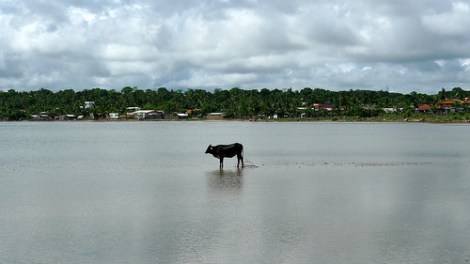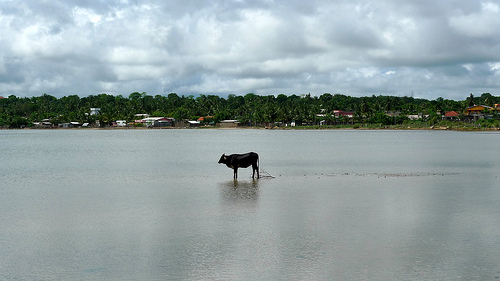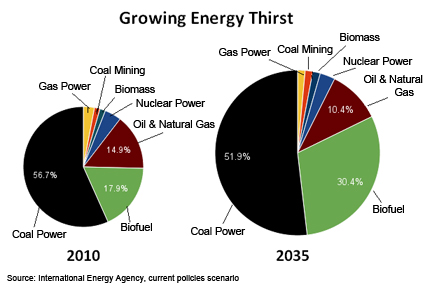You can’t make electricity without water. I mean, you can, but you have to use things like “solar panels” or “wind turbines,” and who’s going to do that? (Lots of people, I guess, but that doesn’t help my point.) A 2009 study suggested that half of the freshwater we use goes to energy production, boiled to create steam to turn turbines, or used to cool off reactors. When we run low on water — or when the water gets too warm — the ability to generate electricity declines or halts. (Except from wind turbines and solar panels; I’ll just keep pointing that out.)
According to the International Energy Agency, the amount of water we use for energy is about to go up. A lot. From National Geographic:
The amount of fresh water consumed for world energy production is on track to double within the next 25 years, the International Energy Agency (IEA) projects. …
If today’s policies remain in place, the IEA calculates that water consumed for energy production would increase from 66 billion cubic meters (bcm) today to 135 bcm annually by 2035.
That’s an amount equal to the residential water use of every person in the United States over three years, or 90 days’ discharge of the Mississippi River. It would be four times the volume of the largest U.S. reservoir, Hoover Dam’s Lake Mead.
That 90 days of Mississippi discharge presumably means when the river is at its normal level, not when it has been depleted by drought.
Which is the flip side of this heavy coin. Even as power sector water use doubles globally, the amount of water at hand is expected to drop, as climate change increases the length, frequency, and severity of droughts. A draft government report released earlier this month suggests that the Southwest will see more drought and the Southeast more strain on water supplies as the century continues. During Texas’ drought in 2011, several electricity production facilities came close to shutting down for lack of water.
Interestingly, shifts in power production away from coal and to other sources (excluding solar and wind!) won’t help the trend. The IEA suggests that the increased use of biofuels — renewable, organic material — will be a major source of “water stress,” increasing 242 percent over the next 20 years. Fracking for natural gas, on the other hand, isn’t likely to consume a large share of water. (We’ll see about water contamination.)

Enjoy it while you can, cow.
I could be apocalyptic and suggest that we’ll see some weird, Matrix-y war in 100 years as electricity-dependent robots seize control of dwindling water supplies that humans need to drink. That’s not going to happen. What could happen is that we’ll increasingly need to choose between uses for our water as we need more and have less.
If only there were a way to make electricity while using hardly any water at all.





